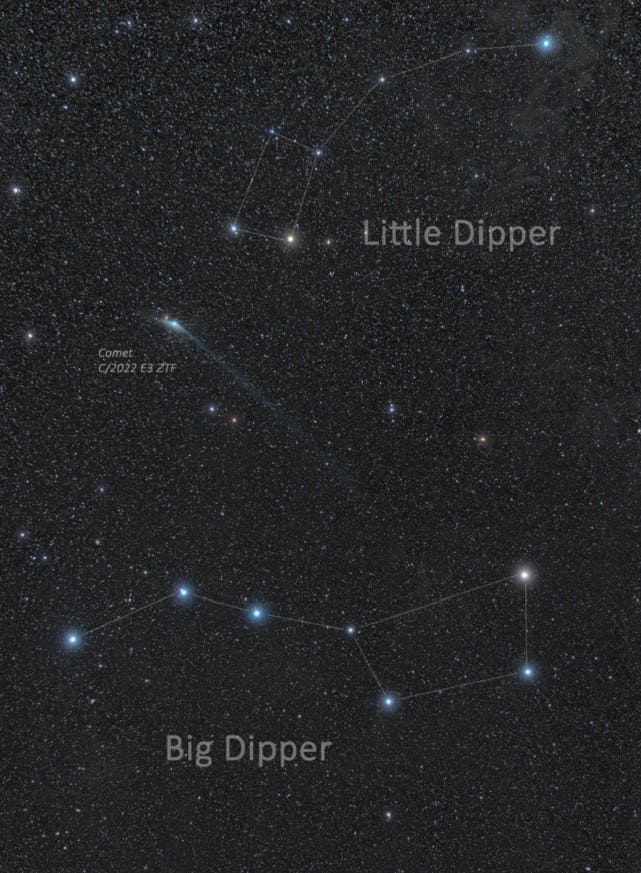
The last time comet C/2022 E3 (ZTF) passed through the inner Solar System, Neanderthals and Homo sapiens were still neighbors in parts of Ice Age Europe — and we may be the last members of our species to see it.
Comet ZTF is already starting the outbound leg of its long journey, headed back to the cold, dark outskirts of our Solar System after passing within 26 million miles of Earth on February 1.
Astronomer Petr Horalek, of the Institute of Physics in Opava, Czech Republic, photographed Comet ZTF in late January — shortly after its closest approach to the Sun, and on its way toward its closest approach to Earth — framed by two of the most recognizable constellations in the night sky. The Little Dipper appears in the sky above the comet, with the North Star, Polaris, at the tip of its handle. Below the comet lies the Big Dipper.

Can you still see the green comet?
Short answer: Yes!
As the comet moves away, it’s becoming too dim to see with the unaided eye, but it’s still bright enough to spot with a decent set of binoculars or a pretty basic telescope. You’ll need a clear night and a very dark viewing spot, and your best opportunity will come in the hours before the Moon rises. Around February 10, Comet ZTF should pass almost in front of Mars, which should make an awesome scene.
Why is the green comet green?
Short answer: Carbon!
Comets are mostly ice, but only some of that ice is plain frozen water. It’s also a mix of other frozen compounds like methane and ammonia. As those ices evaporate in the heat of the inner Solar System, ultraviolet radiation from the Sun also breaks down some of their molecules, so the carbon in (for example) methane ends up as two carbon atoms bound together. This is called atomic carbon, and it’s a very short-lived molecule; over the next two days, sunlight will break the bond between the two carbon atoms, splitting them apart. And in the process, they’ll emit light in the wavelengths that give the green comet its trademark eerie glow.
Where is the green comet going?
Short answer: Away!
Astronomers have been plotting Comet ZTF’s trajectory around the Sun since its discovery in March 2022, using observations and computer models. Some of those models show that the comet is caught in the Sun’s gravitational pull, which means it will eventually make another lap around the Solar System. But other models suggest that the comet may actually be about to break free of the Sun’s influence and go careening off into interstellar space. Another question — which we may never have the answer to — is whether Comet ZTF formed here in our Solar System or whether the Sun plucked it from interstellar space more than 50,000 years ago.







